If you’re just starting your sourdough journey, you probably have questions. In this post, we’ll discuss how to use a sourdough starter, hopefully reassuring you that it’s not actually that complicated.
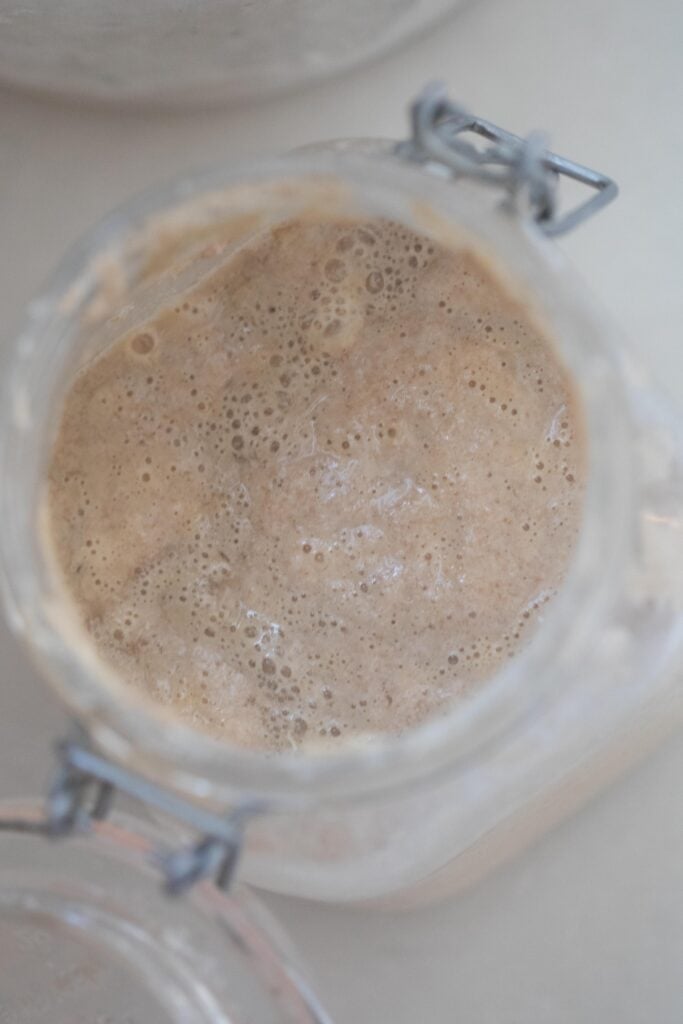
What Can I Make With Sourdough Starter? What can’t you make with sourdough starter?
Of course, I’m biased over here, loving all of the sourdough things and using sourdough daily in our home. But truly, sourdough is incredibly versatile.
Tip: One good rule of thumb is not use up all of your starter in a recipe. It might sound like a no-brainer, but sometimes your recipe calls for one cup of starter, and maybe that’s about all you have.
If this is the case, use what you need, being sure to leave at minimum one teaspoon. Feed it flour and water and watch it grow with daily feedings! The wild yeasts and beneficial bacteria are surprisingly assertive! They’ll go after the flour and water and take it over.
The best way to get started is to pick a recipe and go for it. Trial and error are inevitable and they offer priceless learning experiences.
Scroll on through for further information on the basics of sourdough starter, and hopefully some answers to any questions you might have.
But if you’re feeling pretty confident, let’s explore some of my favorite basic breakfast, dinner, and dessert recipes to get you going!
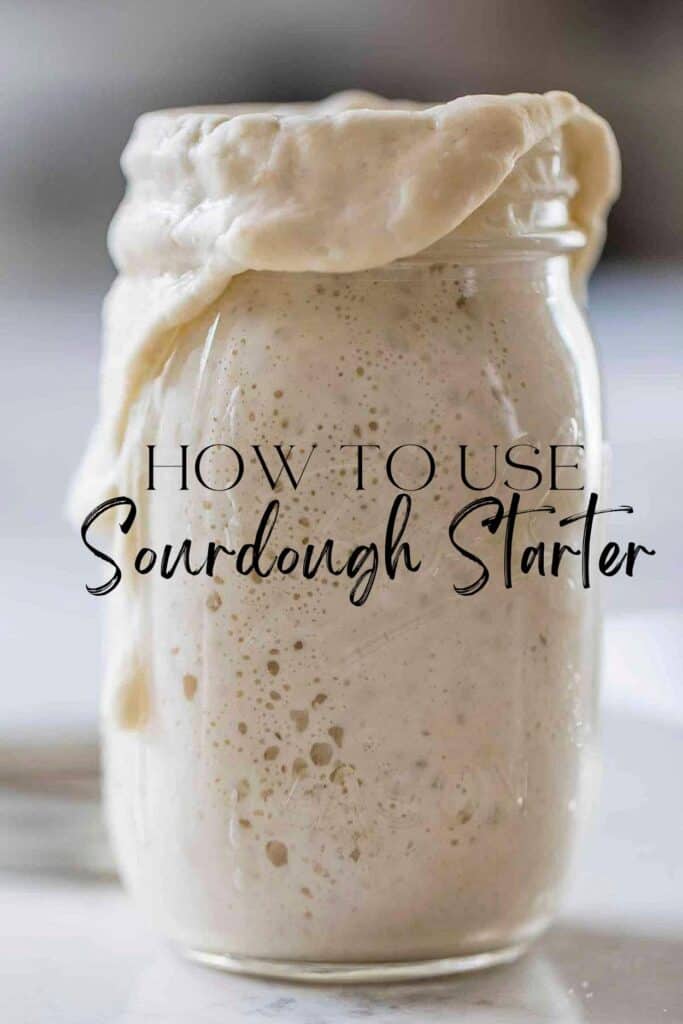
Preparing Your Sourdough Starter for Baking
Baking with sourdough requires a healthy, active sourdough starter to bring about a successful rise.
If you keep your starter at room temperature, simply feed it before baking, giving it enough time to reach its active peak – typically between 4-12 hours. As you care for your starter, you’ll become familiar with how long it takes to peak.
With a refrigerated starter, you’ll want to pour off any dark liquid that might have collected on top, discard a good portion of the starter, and then feed it. Keep the starter loosely covered at room temperature, preferably in a warm place. It will likely need a couple of feedings before it is ready for baking.
Is my starter ready?
If you’ve developed your own starter from scratch, it’s considered a young starter and will be strengthened through continued care over time. If it is less than a week old, it is likely not ready for baking.
A mature starter is typically several months old and beyond, peaks consistently with feedings, displays visible signs of activity such as foaming and bubbling, and offers the signature sour aroma of sourdough.
Aside from these visible signs of activity, you can also use the float test to measure your starter’s ripeness.
Take a little bit of your active starter and drop it gently into a glass of water. If there are ample bubbles of carbon dioxide in the starter, it should float, indicating that it is active and ready to go. If it lacks enough carbon dioxide, it will sink to the bottom.
The problem with the float test is that many factors can contribute to a false positive or false negative. For more on this, check out my post on the float test here.
This post contains affiliate links, which means I make a small commission at no extra cost to you. See my full disclosure here.
Sourdough Basics
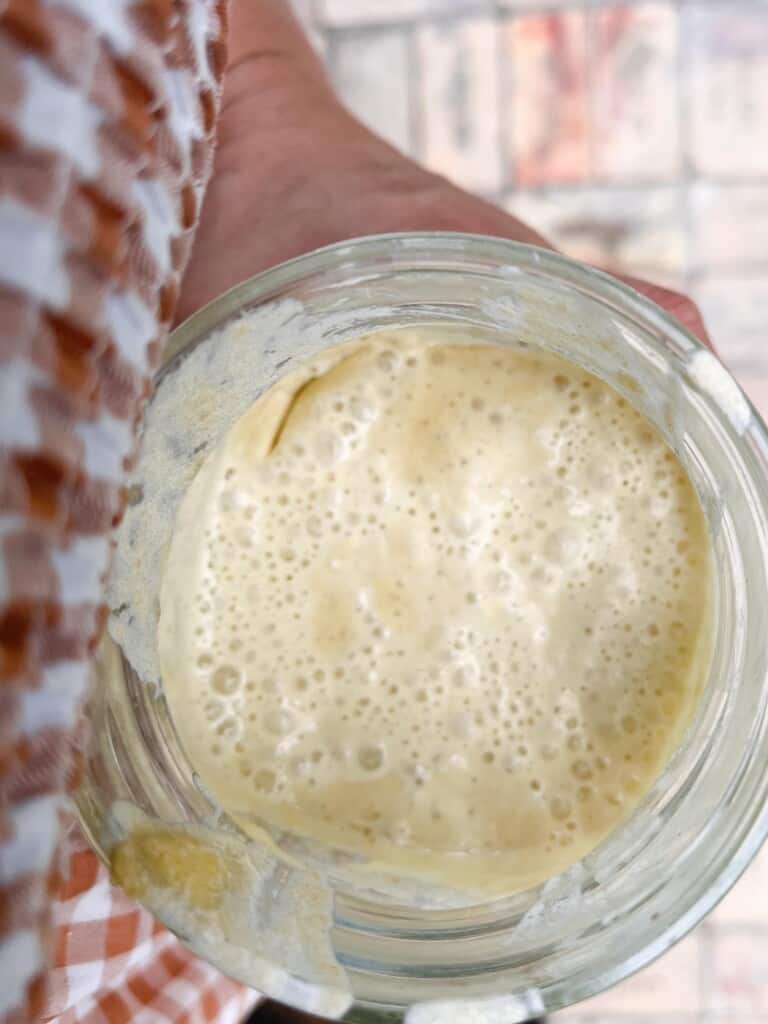
What is a sourdough starter?
A sourdough starter is a live culture of natural yeast and good bacteria that produce carbon dioxide to give baked goods their rise. This living culture comes about through a mixture of fermented flour and water, along with wild yeast and beneficial bacteria naturally present in the flour and surrounding environment.
Continued feedings and care will help this culture thrive, feeding off the sugars in the flour and producing little bubbles of carbon dioxide that work as a natural leavening agent.
The acid in sourdough starter gives a pleasantly sour flavor to baked goods, hence its name sourdough.
Additionally, the fermentation process works to break down phytic acid – an anti-nutrient that is naturally present in grains – making the nutrients more bioavailable and the grains more easily digested.
While commercial yeast will quickly rise dough, it lacks the benefits of sourdough. Less time, but also less flavor and less bioavailable nutrients.
Where to get a sourdough starter?
You can easily make your own sourdough starter with a simple combination of flour, water, and time. This method does take a little longer, but it’s cheap and easily done.
You can also buy an established starter online or in a local shop, which provides a quicker start-up.
Also, you can ask around for a small amount of starter from a friend. I’ve found that my baking friends are eager to share their starter – probably because the sourdough life is incredibly satisfying and we want to share the love.
I’ve seen friends post on social media about losing their starter or simply wanting to give sourdough a try, and offers came quickly for replacements!
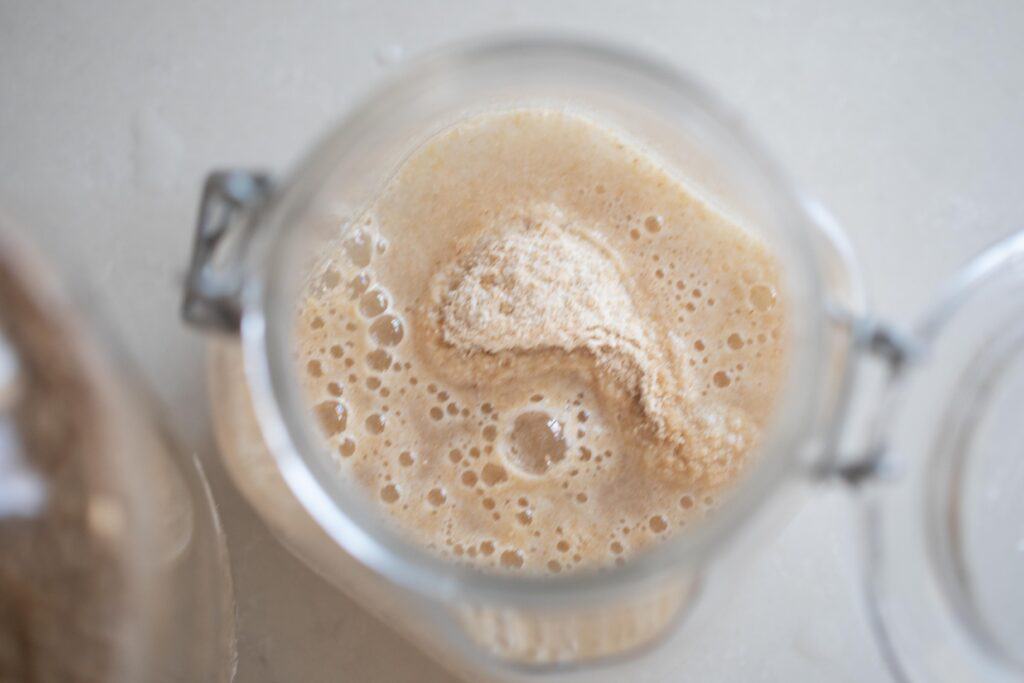
Sourdough Maintenance
Now that you have a starter, what’s the next step?
What type of container should you use?
Glass is truly the best option for sourdough for several reasons.
Non-porous: Easy to clean, and less prone to harboring harmful bacteria.
Good visibility: Monitoring the health of your starter couldn’t be easier. You can see your starter respond to feedings, you can see when it peaks, and you can see when it falls. Whether signs of good health or bad health, you’ll be able to see it.
Cheap: Glass containers are as easy as Mason jars, storage jars, or even recycled food jars. They are cheap, plentiful, and come in all shapes and sizes.
What type of flour should you use?
Sourdough starters do well with all kinds of flour. Much of this is up to your preference, though some flours have benefits over others.
Whole wheat flour contains all components of the wheat berry, which gives the yeast and bacteria more to work with, speeding up activity.
All-purpose flour is very predictable and perhaps the best flour for beginners. It provides good gluten structure, is easy to find, and is generally the most affordable.
Rye flour can be a great option for its whole grain nutrition and complex and earthy flavor profile.
There are so many other options, including gluten-free flour, einkorn, bread flour, and barley.
Whatever flour you choose, consider its gluten content for structure, texture, and rise, as well as its flavor in connection to your needs.
I wouldn’t want to use rye flour in a sourdough vanilla cake recipe, but I would certainly want rye for baking my favorite pumpernickel bread.
What kind of water should you use?
While tap water is an option, filtered water is best. Tap water often contains levels of chlorine or other chemicals that can hinder fermentation. A good filter will remove the added chemicals and disinfectants while leaving the minerals behind. This is helpful for sourdough starter.
Distilled water doesn’t contain anything extra – no good bacteria, no bad bacteria, no minerals. It’s essentially empty. This might seem clean and good, but it actually doesn’t encourage fermentation and isn’t a good choice.
As far as temperature goes, you want to keep away from extremes.
Very hot water can harm the yeast, and very cold water will make your starter sluggish. Lukewarm water is usually the best bet.
Consider the temperature of your starter’s location. If it’s kept in a warm place, you can get by with cool to lukewarm water.
If it’s kept in a cooler place, warmer (not hot) water will encourage fermentation.
Where should I keep my starter?
First, ask yourself how often you’ll be baking. Every day? Once a week? Twice a month?
Where your starter lives will be determined by this answer.
Frequent baking
If you plan to bake daily or at least several times a week, you’ll want to keep your starter in a location that encourages activity.
This is often a warm spot, such as on the kitchen counter near the stove, near another heat source, or even in a sunny window.
Other options might be a smaller, warmer room like a pantry, on top of the refrigerator, or on the counter above the dishwasher (my dishwasher provides a gentle warmth on the counter directly above it).
Wherever you choose, it’s usually a good idea if it’s somewhat visible. You wouldn’t be the first to forget about your starter simply because it was “out of sight, out of mind”.
Occasional baking
If your baking is more sporadic, or even consistent but just once a week or less, it’s best to refrigerate your starter between uses.
When left at room temperature, starter is constantly and more rapidly feeding and fermenting. Meaning you’ll need to feed it often so that it does not begin to sour beyond what is desirable.
Keeping it in the refrigerator slows down fermentation, which slows down the feeding schedule.
What is sourdough discard?
Feeding your starter daily will also require daily discarding, which is removing a portion of the starter and feeding the remainder.
The portion that you remove is called discard. While it is termed discard and you can throw it away…wait! You can store this up in a jar in the fridge for future use in sourdough discard recipes, which are recipes designed specifically for this purpose.
Discard recipes incorporate sourdough discard for a few reasons:
- reducing food waste by not throwing away the discard
- enhancing the taste of your bakes with the signature tang and sour flavor of sourdough
- adding beneficial lactic acid bacteria via the fermented starter discard, which can be further fermented in your recipe by extending its rest period before baking
The difference between sourdough recipes and discard recipes is the activity of the starter. Many sourdough recipes use active, recently fed starter which will rise the dough, whereas discard recipes are utilizing the unfed, discarded portion of starter.
Discard isn’t used for rising, but for the benefits listed above. Although many recipes that call for discard could also use a active starter. Hopefully that isn’t too confusing.
Furthermore, discarding helps to keep the size of the ever-growing starter manageable.
Without discarding, your starter potentially doubles and doubles, which becomes an extra cost when your feeding ratios must be increased to maintain a healthy sourdough starter. It’s just not sustainable.
Too much starter compared to your flour and water feeding ratio may also leave it overly hungry because there is so much competition for food.
This is why a 1:1:1 ratio is a good recommendation, particularly for beginners – one part starter to one part flour to one part water. This ensures the yeast and bacteria are satisfied.
Hydration & Consistency
The amount of water in your starter will determine its consistency. A high hydration or low hydration starter refers to the flour and water feeding ratio, which I’ll break down below.
Ultimately, this is a matter of preference. Over time, you will find what works best for you and your baking needs.
Familiarity with sourdough will give you the confidence to experiment with how much flour and water you need to maintain a happy, healthy starter.
Stiff starter
A stiff sourdough starter resembles an airy, rising dough. It is thick, bubbly, and remarkably fluffy. A thicker starter is achieved by lower hydration feedings, meaning less water and more flour.
This could be a feeding of one cup of flour and half a cup of water, which is considered a 50% hydration level.
A stiff starter rises higher because it holds onto more carbon dioxide bubbles.
Liquid starter
A liquid starter very much resembles pancake batter, being thinner and runny. It will slosh a bit, whereas a stiff starter sticks together. A liquid starter has a higher hydration, meaning more or equal parts water to flour.
A 100% hydration level would be a feeding such as the recommended 1:1:1, which is one cup of water and one cup of flour to one cup of starter.
Liquid starters will rise and be bubbly, but not as dramatically as a stiff starter.
Some Encouragement
Sourdough truly is an art. It’s a skill to learn. What makes it a skill is the time and perseverance behind it – and at some point, the success and confidence.
Don’t get frustrated by a few flops if and when they happen.
I’m just thrilled it’s an art that many more people are beginning to bring back to life.
Just start somewhere. Read, experiment, and ask questions. This is a fun skill to learn, as well as a delicious one.
And with time, I promise you’ll be glad you stuck with it!
How To Use Sourdough Starter In Recipes
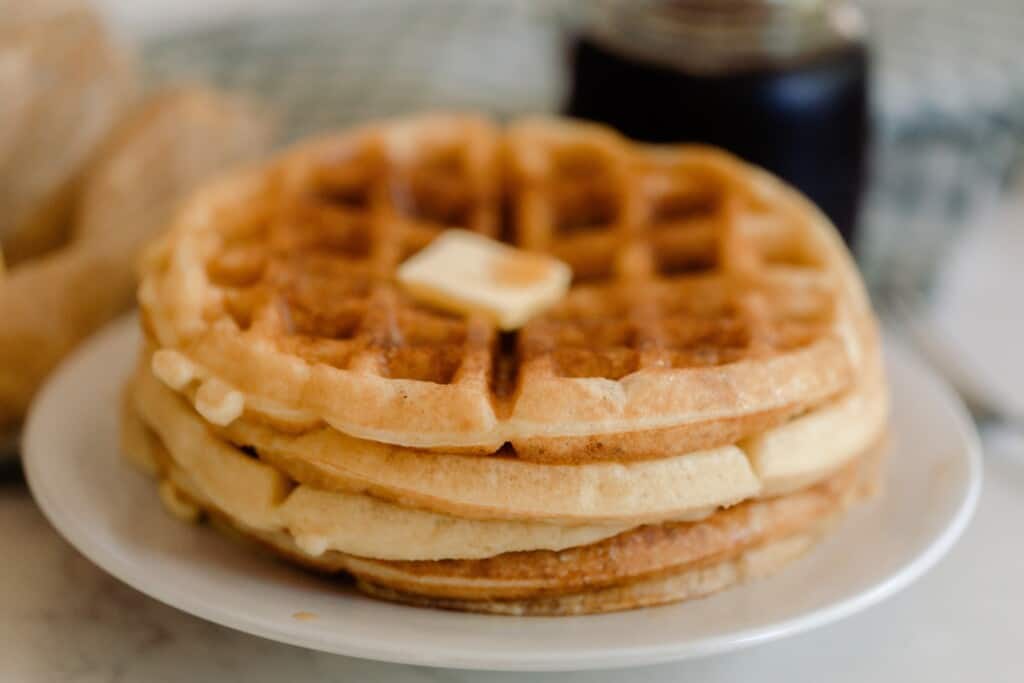
Sourdough for Breakfast
Easy Sourdough Waffles are a great recipe for beginners. Feed your new starter the night before so that it is nice and bubbly in the morning. While it may have peaked and fallen, that’s okay for the purpose of these waffles.
With your starter active, all that’s left is to combine all of the waffle ingredients and cook. This is a quick, delicious recipe for golden brown, crisp waffles with a fluffy interior. Drizzle with maple syrup or top with fresh fruit. Then feed your remaining starter again and anticipate your next recipe!
The Best Sourdough Pancakes are made with a recently fed starter, active and bubbly, and cooked until golden. This is a great beginner recipe since it’s such a familiar breakfast food and combines the tangy goodness of sourdough. Give it a try for your Saturday morning pancakes! Don’t forget to feed your remaining starter after using it.
Sourdough Discard Scones are a tantalizing breakfast treat. They are quickly put together with sourdough discard (no feeding or waiting necessary!), and being a master scone recipe, they are just waiting for whatever add-ins you desire!
Try cinnamon chips, chocolate chips, lemon zest and blueberries, or even mixed berries. I’ve made them many ways with success. They’re great for breakfast, afternoon tea, or gifting to a friend. If you’re discarding daily and saving it up in your fridge, this is a great recipe to put that discard to use!
Sourdough for Dinner

Sourdough Pizza Dough can be started in the morning and will be ready for toppings by the end of the day. Pizza Friday, anyone? This is an easy, active starter recipe that puts your stand mixer to work for you.
With an 8-hour rest period, this pizza dough gives you the day off and almost puts itself together. This chewy, flavorful crust is wonderful topped with sauce and cheese. Don’t forget to feed your starter ahead of time!
Easy Sourdough Dumplings make the best Sunday dinner (or any night!). They are a discard recipe, adding sourdough tang without any wait. Mix them, shape them, and cook them up with your favorite chicken stock.
Easy Sourdough Dinner Rolls add the perfect touch to nearly any meal. Being an active sourdough recipe, they require a fed and bubbly starter, kneading in the stand mixer, and an overnight rest. Prep them to be ready to pop in the oven the next day for a wholesome, long-fermented accompaniment.
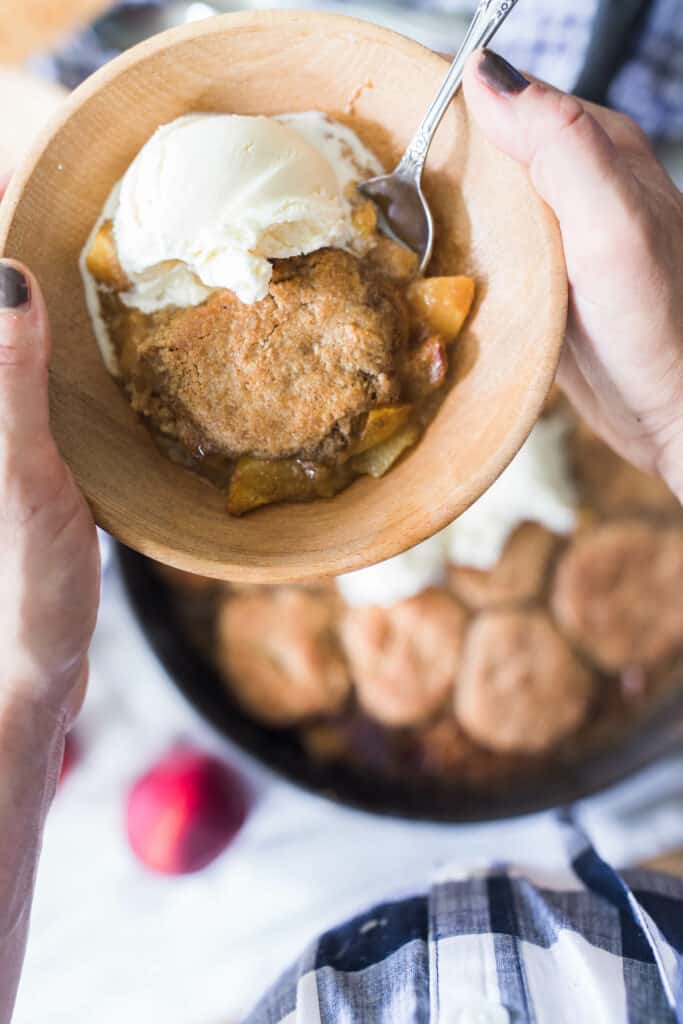
Sourdough for Dessert
Sourdough Banana Muffins are easily breakfast and dessert, but regardless, they are simple and foolproof. Made with discard and ripe bananas, they are packed with flavor. The crumb topping is optional, but don’t skip it! It’s so good!
Sourdough Brownies are a quick, discard recipe to satisfy your sweet tooth. These brownies are rich with chocolate flavor and sourdough notes, but you can easily long-ferment them to boost that sourdough tang! If you need dessert tonight, these are easily whipped up in the afternoon.
Sourdough Chocolate Chip Cookies are the classic cookie you love, but made with sourdough discard. Chill in the fridge for one hour for best results, but I think they’re even better when long-fermented for 12-24 hours. If you’ve not tried sourdough chocolate chip cookies, here’s your cue. They are wonderful!
Sourdough Peach Cobbler is an active starter recipe, so feed your starter 4-12 hours before you begin. Then, mix up your cobbler dough and ferment at room temperature for 8-24 hours, covered. While it’s fermenting, the flavor is developing and the phytic acid in the grain is being broken down, providing better nutrition and digestion.
Baked with fresh peaches and served with vanilla ice cream, this is one of our favorite seasonal desserts.
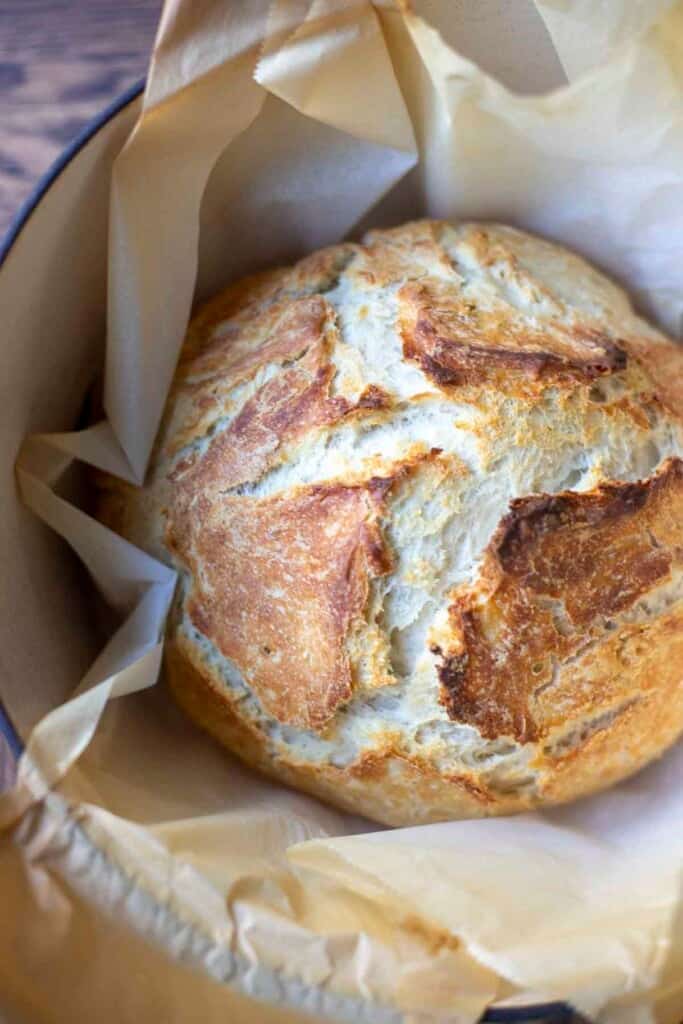
FAQ
Uncooked sourdough starter contains raw flour, which potentially contains harmful bacteria. Baking the sourdough kills off any potentially harmful bacteria, making it safe to consume. This is the same consideration given to eating raw cookie dough, and yet I know many who toss aside the potential risk because cookie dough is irresistibly delicious.
With proper care, sourdough starter lasts indefinitely! I’ve had mine for many years now.
Sourdough begins to turn after consistent neglect. It’s a pretty resilient thing, but too little food or too few feedings can cause it to become pretty unhappy. Thankfully, it will let you know.
Signs of pink tinge across the surface, a layer of dark liquid, an off-putting smell, or even a failure to bubble and rise are all signs that your starter is struggling. Mold is one of the greatest concerns, although with care and maintenance, starters are pretty resistant to mold. I put out an entire post on this topic that you can check out here.
Short answer: yes. The long answer is that if you don’t discard each time you feed your starter, then your starter will quickly become unmanageable. At the rate that the flour and water ferment, the starter will end up growing to a larger amount than the usual measure of flour and water that you were originally feeding it.
So unless you begin feeding it more often or in larger amounts, signs of discontent will show up, such as the starter becoming sluggish, less responsive, and overly sour.
When following the 1:1:1 feeding ratio, your starter, unchecked, will move quickly from needing a cup of water and a cup of flour to unreasonably asking for a whole bag of flour. (This could be a children’s book.)
And while discarding seems wasteful, it doesn’t have to be. Save up your discard in a jar in the refrigerator for sourdough discard recipes.
While this strongly depends on each recipe and your individual starter’s maturity and activity, it’s common for the starter to be about 20-30% of the flour needed in the recipe.
Your starter will survive. Just discard before your next feeding – no harm done.










What is the difference between sourdough discard and active sourdough starter?
Active starter is something that you have just fed and allowed time for it to rise and get bubbly. Discard is usually the leftover starter after you make a recipe, that you put back in the fridge. It won’t be bubbly and active, it will have fallen. You can use discard in recipes that don’t need anything to rise, except baking soda and baking powder.
Hi lisa.. If my starter just left about a teaspoon so how much water and flour to feed the starter again?
You can feed it as much as you need to get it going again. 1/2 cup flour 1/2 cup water would be fine.
I am on Day One of my whole wheat sourdough starter. Tomorrow when I discard half, can I use it?
yes.
I have been successfully making delicious sourdough bread for a year now and just purchased a mill to grind my own flour. If I use dark red wheat berries and make flour, would I measure it exactly the same for my bread as I did with the store bought bread or all purpose flour?
Yes. Use hard white or red for breads and then a soft white for pastries, cakes, and cookies.